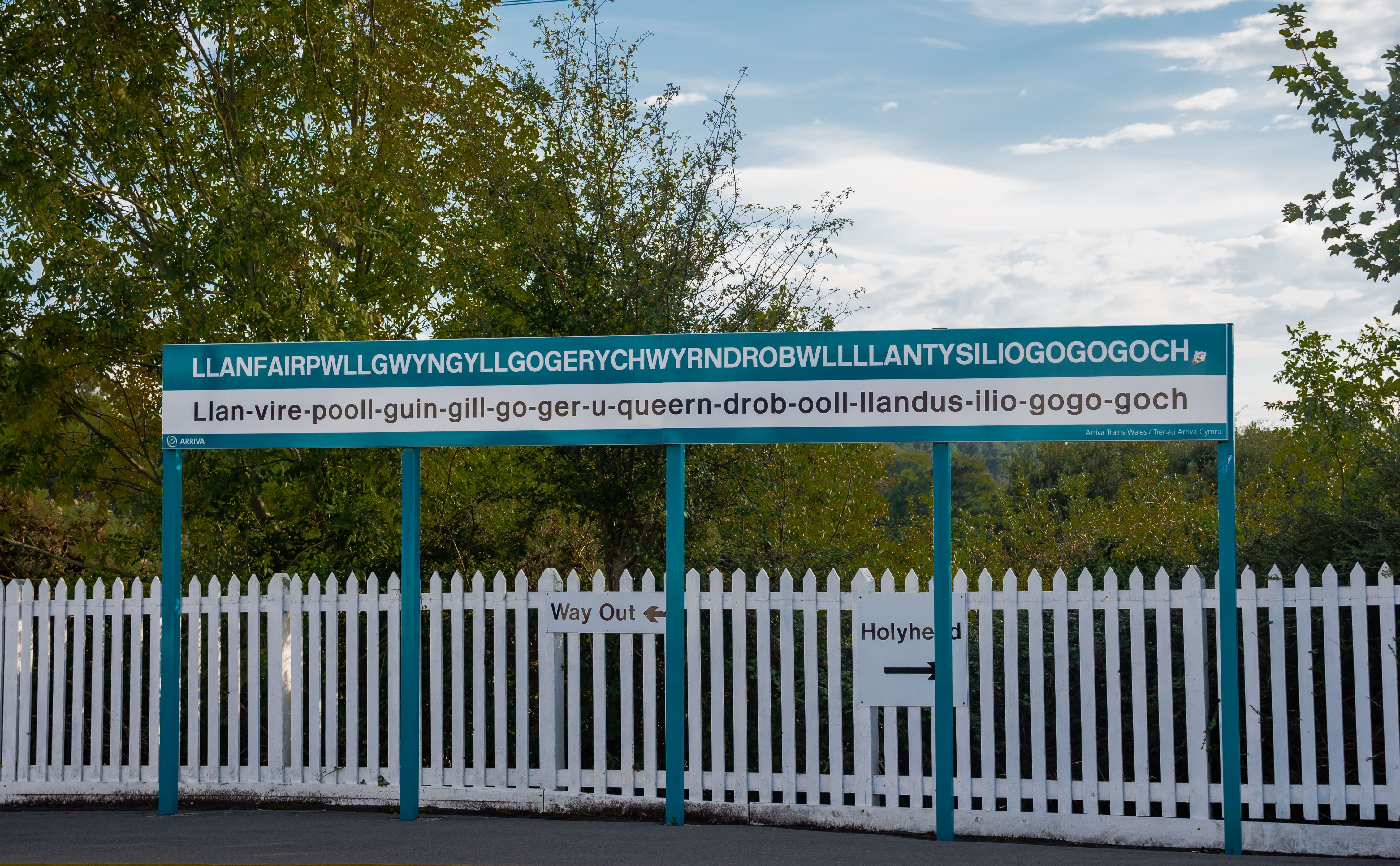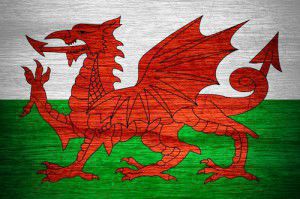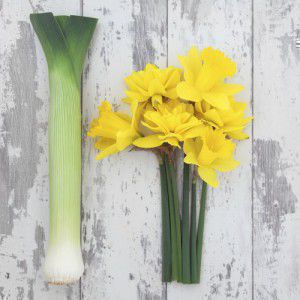How do you say Llanfairpwll…?
Everyone was blown away the other day when Liam Dutton managed to effortlessly pronounce the longest ever Welsh place name on live TV: Llanfairpwllgwyngyllgogerychwyrndrobwllllantysiliogogogoch.
Anything he can do…
I don’t know about you, but here at the EuroTalk office we enjoy a healthy challenge, and this looked like just the sort of thing to get our teeth into! For all those of you who’ve seen our video… Okay, maybe it didn’t go exactly according to plan, and didn’t sound entirely as fluent as Liam Dutton’s version, not to mention that our varying collections of vaguely Welsh-sounding syllables probably didn’t mean anything at all in Welsh, let alone bore a resemblance to the actual meaning of the word, which is (take a breath): ‘Saint Mary’s Church in the hollow of the white hazel near a rapid whirlpool and the Church of St. Tysilio of the red cave’.
Still, practice makes perfect, and this was just our first time. If anyone would like to try to do it better than us (which is probably not too much to ask), why not enter out competition to win a FREE Premium Welsh uTalk app. We’ll be picking the winner based on the creativity of the video, and your attempt to pronounce the word. To enter, tweet us @EuroTalk, post it on our Facebook page or email it to challenge@eurotalk.com by Friday 25th September.
So how should we have pronounced it?
To make it slightly easier, here’s a few pointers we used as to how to pronounce it:
1. It helps to break the word down into bite-sized chunks: Llan – fair – pwll – gwyn – gyll – go – ger – ych – wyrn – drob – wll – llan – ty – silio – go – go – goch
2. Some of the letters have different pronunciation in Welsh to how you would say them in English. For example:
- the ‘f’ in ‘fair’ is pronounced more like a ‘v’, to make ‘vire’
- the ‘y’ in ‘gwyn’ i pronounced more like an ‘i’, to make ‘gwin’
- the ‘w’ in ‘pwll’ is more of an ‘oo’, to make ‘pooll’ AND
- the ‘ll’ in ‘pwll’ is more of an aspirated l (keep the tip of your tongue on the roof of your mouth as you say ‘l’, then blow the air over the top and sides of your tongue)
- the ‘ch’ in ‘goch’ is the same as in the Scottish ‘loch’
Taking that all into account, you end up with something which to English speakers looks a bit more like this:
Chlan- vire- puchl- gwin- guchl- go- ger- uch- wirn- drob- uchl- chlan- ti- silio- go- go -goch
So now that you know it, why not have a go at recording it yourself?
Nat
Language of the week: Welsh
Did you know that Welsh is now one of the 111 languages available to learn with uTalk? And as it was Saint David’s Day yesterday, we’ve chosen Welsh as our language of the week.
1st March each year is when the Welsh celebrate the patron Saint of Wales, who died on that day in or around 569 AD. People all around the globe mark the day by wearing the national emblems, either a leek or a daffodil, and there are parades and various music and cultural events to celebrate the holiday.
St David was buried in the Cathedral of St David’s in Pembrokeshire, which has now become a popular place of pilgrimage.
Here are some fun facts and figures about the Welsh language and Wales (Cymru):
- Arsenal footballer Aaron Ramsay, and singers Connie Fisher, Rhydian Roberts, Cerys Mathews and Duffy all speak Welsh, as do actors Ioan Gruffudd and Matthew Rhys.
- The Welsh alphabet does not include the letters J, K, V, X and Y.
- The Welsh Motto is: ‘Cymru am byth’ (pronounced come-ree am-bith), which means Wales for ever, or long live Wales.
- 21% of the population in Wales speak Welsh, and 20% of primary school children are taught in Welsh.
- The village of Llanfairpwllgwyngyllgogerychwyrndrobwllllantysiliogogogoch is in the Guinness Book of Records for having the longest place name in Britain. Anyone want to have a go at pronouncing it?!
- The national animal of Wales is the Dragon, which appears on the country’s flag.

- Welsh is a Celtic language and was one of the earliest written languages in Europe.
- Since 1865, there’s been a Welsh colony in Patagonia, Argentina. The people there speak Patagonian Welsh, which is different to the Welsh spoken in Wales. This year is the colony’s 150th anniversary.
- Wales is said to contain more castles per square mile than any other country in the world.
- A traditional dish in Wales is laverbread, which is made from seaweed (have you ever tried it?)
Did you celebrate St David’s Day yesterday? Tell us about it in the comments!
New Year traditions around the world
Happy New Year! Whether you’re already there, or have a few more hours to wait, we hope that 2015 will be a fantastic year and bring you everything you hope for.
As the celebrations get underway, here are a few interesting New Year traditions from around the world…
Twelve grapes
In Spain, eat a grape for each strike of the clock at midnight; if you manage to eat all twelve during the chimes, you’ll have twelve months of good luck.
First-footing
This is the tradition of being first into a house after midnight, in Scotland and Northern England. The first-foot should bring gifts of a coin, bread, salt, coal, or whisky, which represent financial prosperity, food, flavour, warmth and good cheer. The best kind of first-foot is believed to be a tall, dark-haired man.
Kissing
A tradition from German and English folklore says that you must kiss someone at midnight, and that that person will be significant in your future. If you don’t kiss anyone, it means you’re doomed to a year of loneliness. Apparently.
Yellow underwear
In Chile, if you want good luck and prosperity in the new year, wear yellow underwear – inside out – and then turn it the right way after midnight.
Making a lot of noise
In the Phillippines, the New Year’s custom is to make a lot of noise at midnight, to frighten away evil spirits. People buy small horns called torotots and also use paputok (firecrackers) as well as banging pots and pans and revving their vehicle engines.
Burning ‘Mr Old Year’
In Colombia, the previous year is seen out by families as they build large stuffed male dolls filled with different materials, and items that they no longer want or that have sad memories attached to them. Then they burn the doll at midnight, which represents burning the past and looking to the future.
Lentils
The first thing you should eat after midnight in Hungary is lentil soup, because it’s believed that lentils will bring you riches in the new year – and the more lentils you eat, the richer you’ll be.
New Year Dip
In various towns on the Welsh coast, brave swimmers take a dip in the freezing sea on New Year’s Day. Some people do it in fancy dress – and no, we don’t know why.
How will you be celebrating the New Year? Whatever you’re doing we hope you have a great time!


